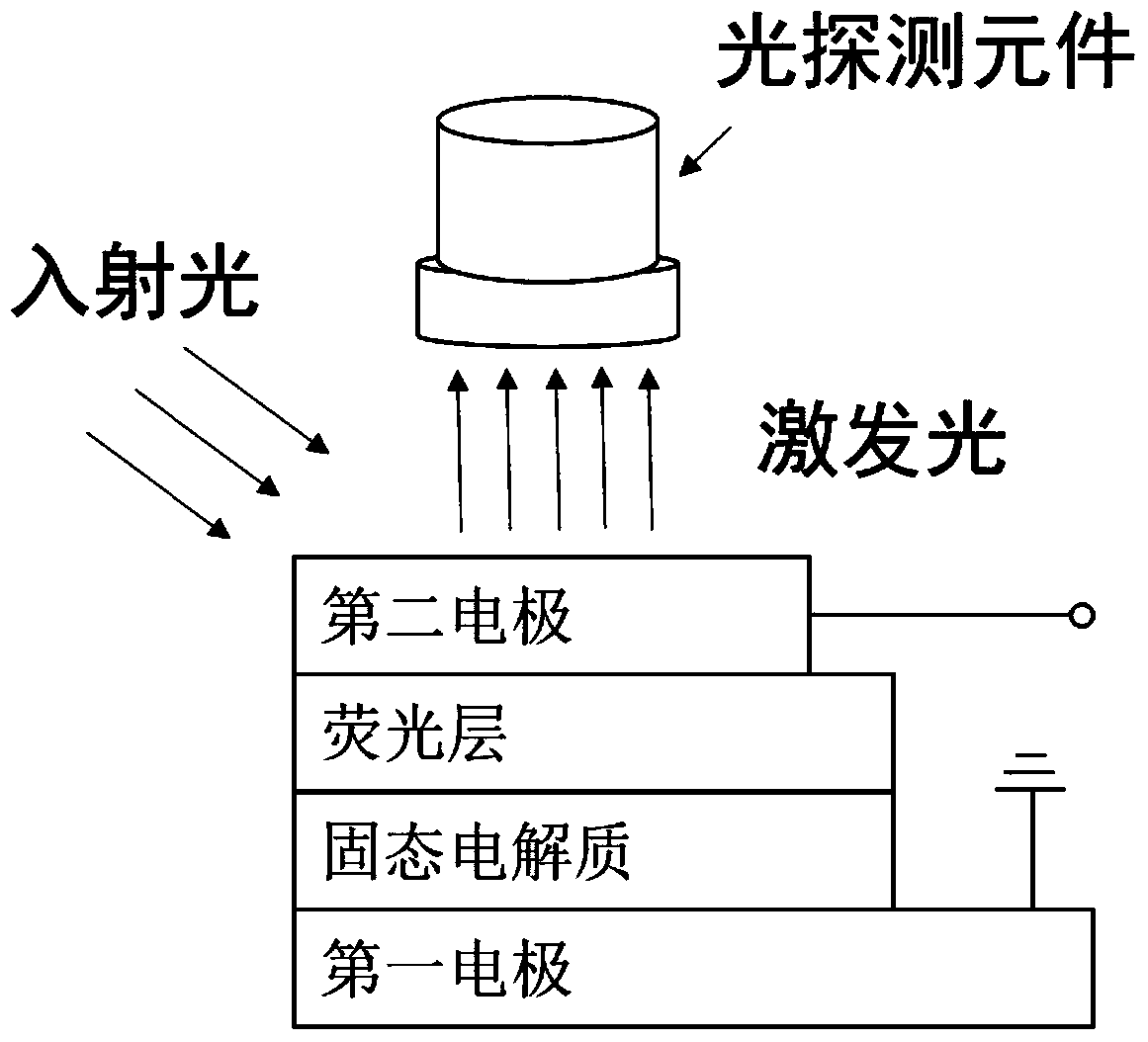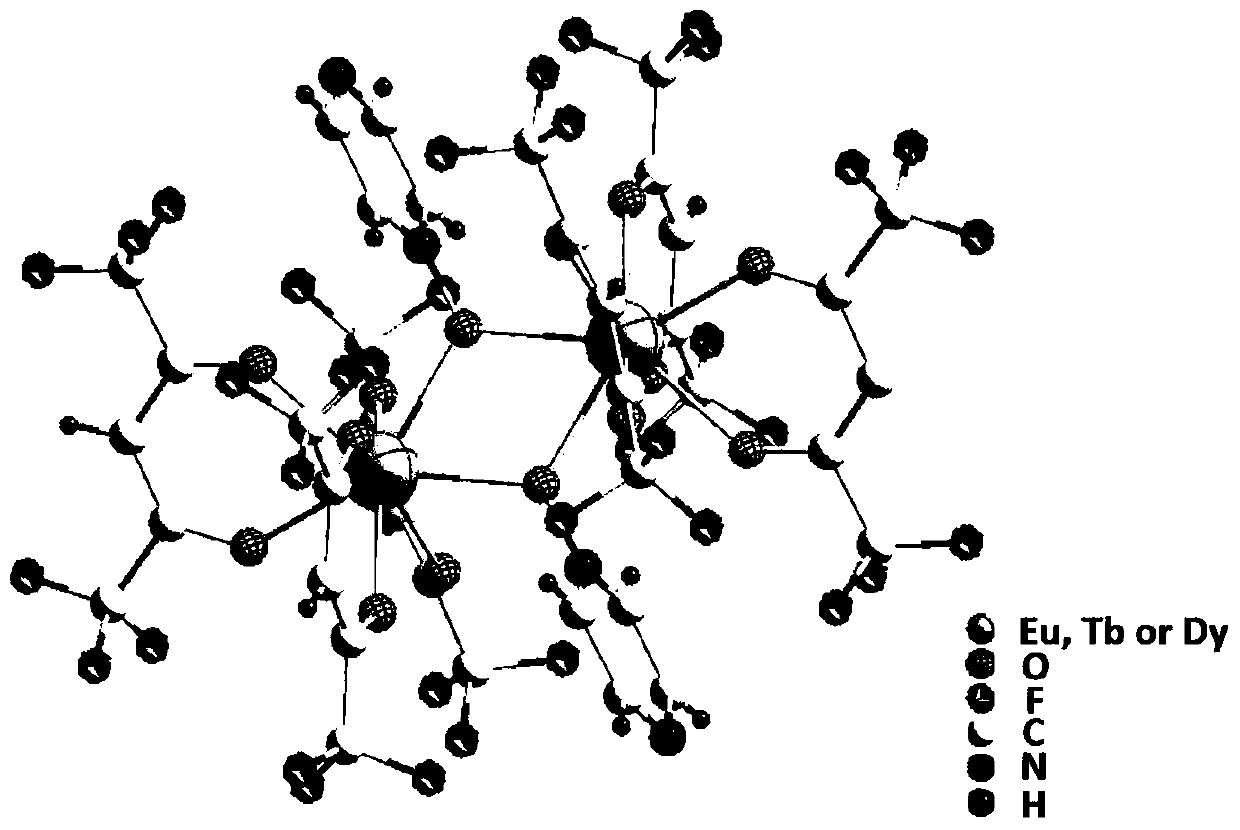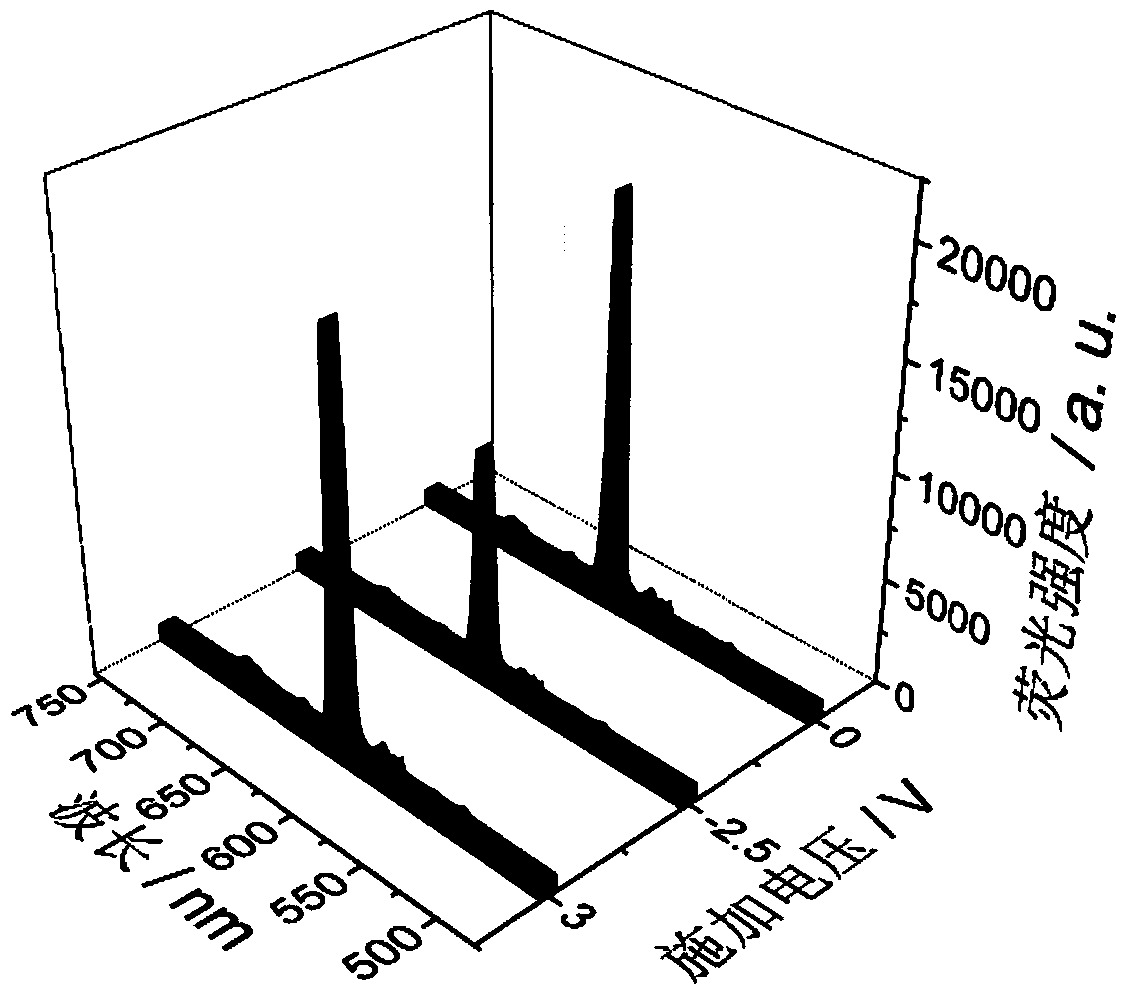A method for regulating the luminescence performance of fluorescent materials in a solid-state environment and an all-solid-state electronically written optical readout memory unit
A technology of fluorescent material and luminescence performance, which is applied in the field of all-solid-state electrical writing optical readout memory cells, can solve problems such as restricting applications, and achieve the effect of expanding application fields and good application prospects.
- Summary
- Abstract
- Description
- Claims
- Application Information
AI Technical Summary
Problems solved by technology
Method used
Image
Examples
Embodiment 1
[0036] In this embodiment, the structure of the all-solid-state fluorescent material unit is as follows figure 1 As shown, it includes a first electrode on the surface of the substrate, a solid electrolyte layer on the surface of the first electrode, a fluorescent layer on the surface of the solid electrolyte layer, and a second electrode on the surface of the fluorescent layer.
[0037] The first electrode is located on the surface of the substrate material Si.
[0038] The first electrode layer consists of platinum.
[0039] The second electrode layer is composed of transparent and conductive ITO (Indium Tin Oxide).
[0040] The thickness of the fluorescent material layer is 100nm, which is composed of a fluorescent compound containing rare earth europium, and its molecular formula is [Eu(hfac) 3 PraNO] 2 , where hfac refers to hexafluoroacetylacetone, PraNO refers to pyrazine nitrogen oxide, and its structure is as figure 2 shown. Among them, the non-metal atoms that ...
Embodiment 2
[0056] In this embodiment, the composition structure of the all-solid-state fluorescent material unit is basically the same as that of the all-solid-state fluorescent material unit in Example 1, except that the rare-earth europium in Example 1 is replaced by rare-earth terbium in the fluorescent compound material.
[0057] The preparation method of the fluorescent compound material is basically the same as that in Example 1, except that the rare earth europium in Example 1 is replaced by rare earth terbium.
[0058] The fluorescent material layer is irradiated with incident light with a wavelength of 350nm, and the fluorescent material layer is excited to emit excitation light, and the intensity of the excitation light is detected by a fluorescence spectrum detector ANDOR (IR303). When no voltage signal is applied between the first electrode and the second electrode, such as image 3 As shown, the excitation light has the strongest light intensity at a wavelength of 545 nanome...
Embodiment 3
[0071] In this embodiment, the composition structure of the all-solid-state fluorescent material unit is basically the same as the structure of the all-solid-state fluorescent material unit in Example 1, except that the rare-earth dysprosium in the fluorescent compound material replaces the rare-earth europium in Example 1.
[0072] The preparation method of the fluorescent compound material is basically the same as that in Example 1, except that the rare earth europium in Example 1 is replaced by rare earth dysprosium.
[0073] The fluorescent material layer is irradiated with incident light with a wavelength of 350nm, and the fluorescent material layer is excited to emit excitation light, and the intensity of the excitation light is detected by a fluorescence spectrum detector ANDOR (IR303). When no voltage signal is applied between the first electrode and the second electrode, such as image 3 As shown, the excitation light has the strongest light intensity at a wavelength ...
PUM
| Property | Measurement | Unit |
|---|---|---|
| thickness | aaaaa | aaaaa |
Abstract
Description
Claims
Application Information
 Login to View More
Login to View More - R&D
- Intellectual Property
- Life Sciences
- Materials
- Tech Scout
- Unparalleled Data Quality
- Higher Quality Content
- 60% Fewer Hallucinations
Browse by: Latest US Patents, China's latest patents, Technical Efficacy Thesaurus, Application Domain, Technology Topic, Popular Technical Reports.
© 2025 PatSnap. All rights reserved.Legal|Privacy policy|Modern Slavery Act Transparency Statement|Sitemap|About US| Contact US: help@patsnap.com



